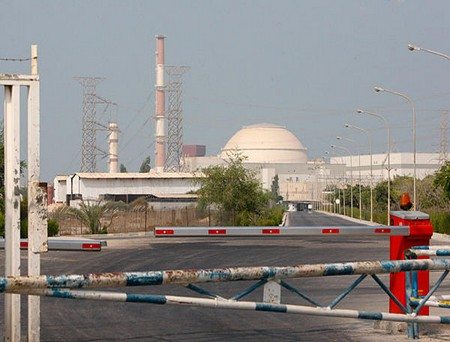Iran has begun transferring centrifuges, machines which churn out purified uranium, to the secretive Fordo plant, the state television website reported Monday quoting Tehran’s nuclear chief.
“The Fordo facility is being prepared and a batch of centrifuge machines have been transferred there,” Fereydoun Abbasi Davani told reporters after a cabinet session on Sunday evening.
“The transfer of centrifuges of the Natanz site to Fordo is ongoing, with full observation of (safety) standards,” he said, adding that Iran was not “rushing” the process.
The Fordo plant was built secretly deep inside a mountain near the Shiite shrine city of Qom, some 150 kilometres (90 miles) south of Tehran.
Revelations by world powers in September 2009 about the facility’s existence in defiance of UN resolutions led to the toughening of international sanctions against the Islamic regime.
Abbasi Davani did not say which type of centrifuges were transferred to the site or if they would be used to enrich uranium to 20 percent purity.
In February, Iran informed the UN atomic agency that the Fordo plant was prepared to host centrifuges, and that it would become operational in the summer.
Iran’s uranium enrichment work — the most sensitive part of its controversial nuclear programme — is currently undertaken at the Natanz facility in central Iran, visited regularly by UN nuclear watchdog inspectors.
On June 8, Abbasi Davani had announced that Iran would expand its production of 20 percent enriched uranium and eventually move the process from Natanz to Fordo.
Iran is under four sets of UN Security Council sanctions over its refusal to suspend the uranium enrichment work, and officials in Tehran say they remain adamant to push ahead with the programme.
In July, Iran said it was installing more efficient centrifuges, capable of enriching uranium at 5-6 times faster than the older machines.
Enriched uranium can be used to produce both the fuel for a nuclear reactor and the fissile material for an atomic warhead.
Iran says it uses the process to amass fuel material for future nuclear power plants and atomic research reactors it plans to build, dismissing fears in the West that Tehran seeks to acquire a weapons capability.
The Islamic republic has over 8,000 centrifuges of the first generation IR-1, with nearly 6,000 actively purifying uranium to the 3.5 percent level, according to the latest report by the UN nuclear watchdog in May.











